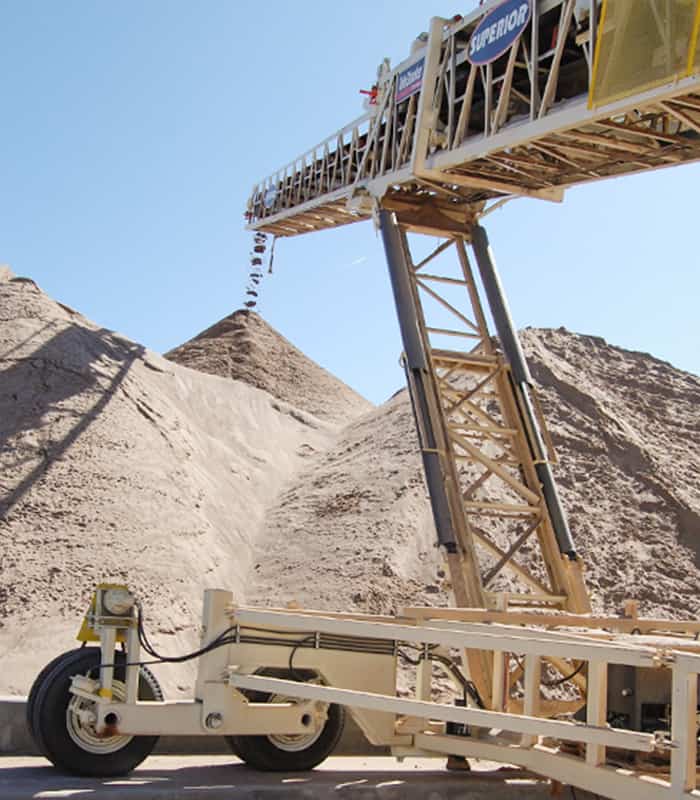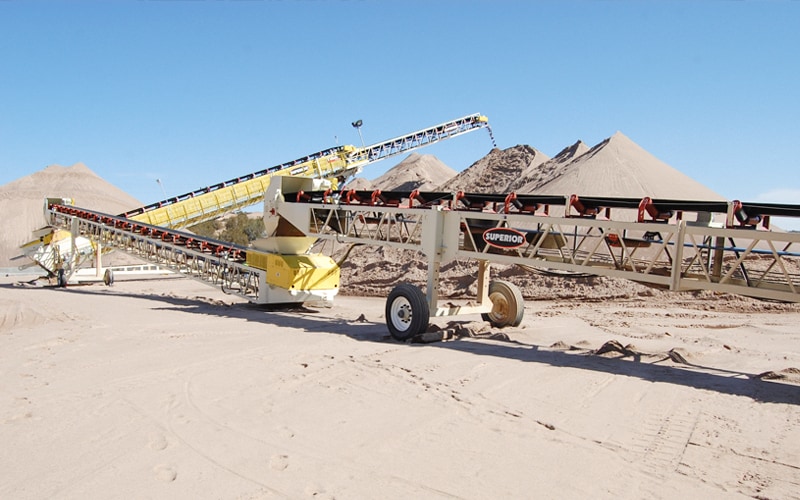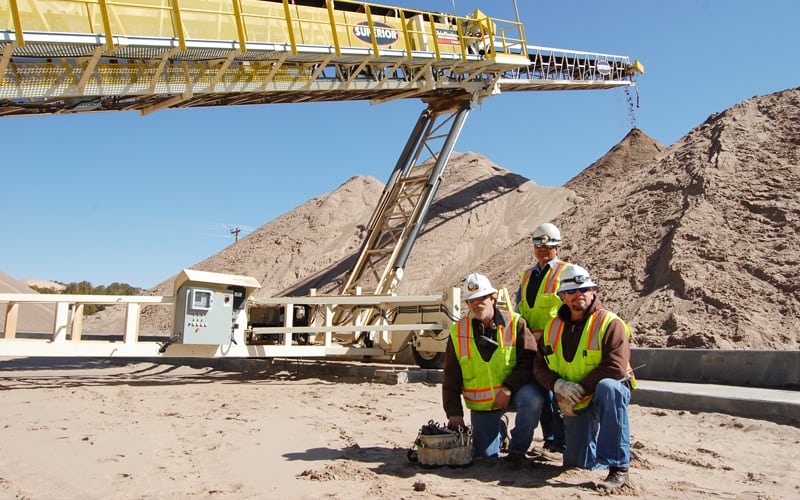Managing Soaring Growth In The Silica Sand Market
Strategic “On-The-Ground” Efficiency Action Items Take a Leading Frac Sand Producer To Top Heights
The Preferred Sands story is about rapid expansion – into the right markets and with the right mission in mind. Since its launch in 2007, Preferred Sands has established itself as one of the top silica sand producers in North America. Today, this privately-held, owner-operated company supplies high-quality frac sand to nearly every major oil and gas company in every major basin. Its growth, says the company, is stimulated by solid customer relationships and a commitment to ongoing innovations in process engineering, product development and logistics management. It’s a mission that has taken its first-year production volume of 180,000 tons to a staggering 5-million-ton mark annually in just over four years.
Preferred Sands was formed by Preferred Unlimited Inc. of Conshohocken, Pennsylvania, for the purpose of acquiring and overseeing the company’s industrial mineral assets. Following the acquisition of its first silica sand mine in Genoa, Nebraska, Preferred Sands broadened its geographic footprint to include operations in Minnesota and Arizona. The Genoa plant is a frac sand processing facility that exceeds 1.2-million tons annually. The operation extracts raw materials from an 80-million-ton reserve accumulated over 75 years through a dredging operation in the Loup River. It is the largest reserve of its kind in the U.S., and has an annual replenishment rate of approximately 1.5-million tons, which allows the company to respond quickly to large orders. The Preferred Sands Minnesota facility, located within 15 miles of the Twin Cities, has access to over 10-million tons of sought-after Northern White silica sand, while the Arizona site has a total reserve of 130-million tons. Each of these locations is equipped with advanced rail load-out systems and easy access to major rail routes, giving Preferred Sands a logistics advantage to cost-effectively reach any region in North America.
“Expansion is a critical component for us in meeting market demand for high-quality frac sand; and in supplying flexible delivery solutions. As such, we are extremely analytical and efficiency-driven,” says TJ Doyle, chief operating officer of Preferred Sands. “Since we focus on on-time delivery and cutting costs for our customers, we absolutely must remain efficient,” he says.
While many busy managers may be in the “getting things done for today” mode, the Preferred Sands management team focuses keenly on “engineering new growth and efficiency engines,” so to speak, in order to create a foundation for long-term value. Consider that at any one time, says Doyle, there are hundred or more “efficiency action items” being applied within the company’s rapid expansion plan. “We have geologists and mine planners analyzing each process at each plant. We break down every aspect of our business to weed out any inefficiencies – as in the manufacturing sector, one’s level of efficiency overwhelmingly determines whether or not a company remains competitive and profitable,” he says.
Among the many efficiency action items in play at Preferred Sands is that of replacing mobile equipment (excavators, haul trucks and loaders) with the right conveyor systems for given material transfer and stockpiling applications. At its Arizona-based plant, Preferred recently replaced mobile equipment with two Superior Industries TeleStacker Conveyors for high-volume, low-cost stockpiling. At its Nebraska site, the company reduced loader use by accessing Superior Industries portable jump conveyors.
“We conducted a cost/benefit analysis on conveyors versus mobile equipment,” says Doyle. “With mine expansion, we examined how much material (and at what cost) could be moved at a given transport distance with a given loader and bucket size. At increased capacities, and to feed the hopper at the desired rate, one obviously has to insert more mobile equipment. However, considering the cost of fuel and labor, we needed to move more material with less mobile equipment. Even considering the costs of new conveyor systems, the returns are quickly realized,” he says.
Note that a recent study conducted by Superior Industries engineers at another mining operation revealed some startling figures when applied to particular parameters. After replacing haul trucks and loaders with conveyor systems, this operation experienced savings as high as $0.46 per ton; $2,800 per day; $14,000 per week; $60,000 per month; and a whopping $700,000 annually.
Project Details
COMPANY
Preferred Sands
LOCATION
Sanders, Arizona
APPLICATION
Aggregates: Frac Sand
PRODUCT(S)
TeleStacker® Conveyor
Jump Conveyors
Summary
Preferred Sands, one of the top silica sand producers in North America, focuses on efficiency and weeds out any inefficiencies found in their operation. Among many efficiency action items taken at Preferred Sands is the replacement of mobile equipment (excavators, haul trucks and loaders) with the correct conveyor systems for the given material transfer and stockpiling applications. After installing a TeleStacker Conveyor and Jump Conveyors, this particular operation experienced savings as high as $0.46 per ton, which adds up to $700,000 annually.
Large volume Stockpiling
The telescoping conveyor consists of a stinger conveyor mounted inside an outer conveyor of similar length. The stinger conveyor has the ability to move linearly along the length of the outer conveyor, thereby varying the location of the discharge pulley. The height of the discharge pulley is variable as well as the radial position of the conveyor. The three-axis variation of the discharge pulley is essential in making the layered pile that overcomes material segregation.
Importantly, automated telescoping conveyors provide increased stacking capacity over standard radial stackers. Up to 30 percent more material (depending upon conveyor size) can be stockpiled under a telescoping stacker. The latter is particularly key to the operations at the Preferred Sands of Arizona facility where two Superior Industries TeleStacker Conveyors are stockpiling what the company refers to as its “work-in-progress” stockpiles, which contain its most desirable premium coarse silica sand materials that are generated from the first major cut out of the wash plants. Then Superior Industries stationary conveyors (versus the former use of loaders) transfer materials from the work-in-progress stockpiles to the drying plants.
Since the wash plants operate for only up to eight months per year, the TeleStacker conveyors are instrumental in creating the larger volume stockpiles required to carry the operation through the winter months, which require no less than the availability of 166,000 tons of material each month to be transferred to the drying plants to meet demand for finished product.
in-pit flexibility
At its Nebraska-based mine, Preferred Sands is reducing costly loader use by accessing the Superior Industries Portable Jump Conveyors, which are sometimes referred to as grasshopper conveyors as they can be set up to piggyback onto one another in various configurations. Stackable for cost-efficient transport, jump conveyors allow flexibility in the pit as each unit can be removed from the line one at a time as the stockpile grows. Also, these units are engineered with adjustable-height axle systems which allow accurate feed into varying feed heights.
Doyle likes the fact that the operation can string the units together as needed. “They are very maneuverable, and we can set a pivot point or a stationary point within our mine and then use these jump conveyors to get out into different parts of the mine as required, giving us further reach and reducing the transit distance for any loader use. Having an electric-powered conveyor that is transporting sand in a very efficient manner is certainly an advantage over a loader that is burning between 9- and 12-gallons of diesel fuel per hour,” he says.
Material Handling Management
Analysts are predicting yet another big bump this summer in the cost of fuel. On the material handling front, this will have little effect upon those who use conveyor systems for the bulk of their material transport requirements. But beyond that, conveyor systems have much more to offer operations like Preferred Sands. As efficiency management tools, advanced conveyor systems eliminate the multiple handling of material while preventing compaction and contamination. Conveyors cut labor and training costs, and they are on the job day after day and year after year with only minimal maintenance needs.
Remaining efficient requires taking the right action at the right time. For Preferred Sands, proper material handling management is a good fit.
Have questions? Need more information? Complete the form below and we will follow up shortly.
Request More Info
See our privacy policy.




